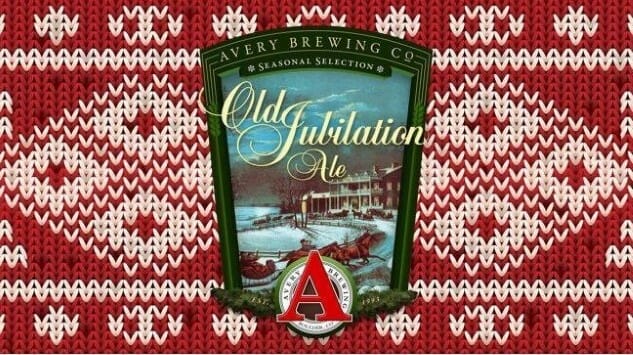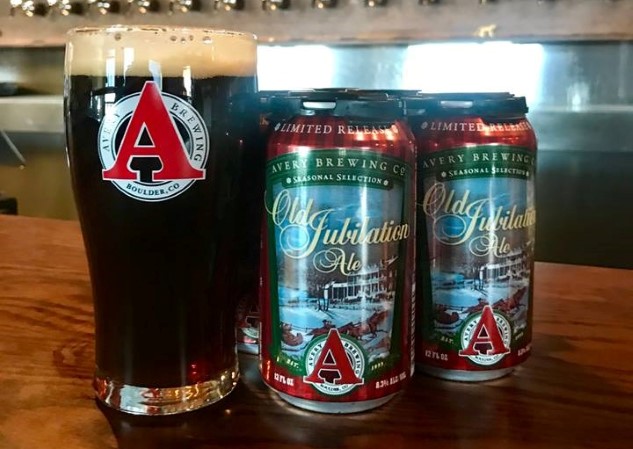Beers We Love: Avery Old Jubilation
Photos via Avery Brewing Co.
In this Paste Drink series, we take a step back from the craft beer hype cycle to offer our enduring endearments to some of our favorite beers that have stood the test of time. These beers should be considered paragons of their respective styles, and just because they’re available year round (in most cases), that never makes us any less excited to crack one open. These are the Beers We Love, and they’ve earned our respect.
What impressions or feelings does a term like “winter beer” conjure up for you? Higher gravities, perhaps? A greater abundance of maltiness in general? Warming spices, in many cases? All of those interpretations are equally common and valid.
For me, though? It’s a beer in the mold of Avery Brewing Co.’s Old Jubilation Ale.
There was a time when “seasonal” releases of this nature were a defining aspect of the craft beer experience—something that set this experience apart from the year-long monotony of being told by Anheuser Busch, Miller or Coors that light macro adjunct lager was the perfect beer for each and every occasion, so shut up and drink it. It’s difficult to describe to someone who only became interested in craft beer within the last few years, but the concept of a “winter seasonal” or “summer seasonal” were ingrained in brewery culture and anticipated by consumers in a way that was significantly more palpable. Almost every regional brewery had well-established seasonal brands that could reliably be expected to return each and every year.
And then gradually, the strength of “seasonals” as a concept seemed to ebb. Perhaps it was the sheer number of breweries continuing to open, or the constant flow of new and short-lived releases, but the idea of immutable “seasonals” quickly became passé. Many were replaced by the more nebulous concept of occasional, “limited” releases, but still, some of the true seasonals have continued bearing that standard. Old Jubilation is one of those offerings—a beer so perfectly suited to the winter season that it’s hard to imagine it in another context. Cold, crisp winter nights fit it like a perfectly worn glove.
So let’s talk about what makes Old Jubilation so lovely.
Why We Love It
At first glance, Old Jubilation probably seems like it would be a pretty familiar sort of beer to those who grew up on the winter seasonals of yore. At 8.3% ABV, it’s a bit stronger than the generic “Christmas ales” that every regional brewery seemed to once possess, but it packs the same ruddy amber hue and malty overtones. Look a bit deeper, though, and this really isn’t the same sort of beer at all. For one thing, it completely eschews the Christmas cookie spicing so prominent in most of the beers labeled as Christmas ales or winter warmers—no cinnamon, nutmeg, ginger or allspice to be found. Rather, it supplants these notes with a more subtle melange of fruit and spice notes that are predominantly derived via ester-laden English yeast. This is no coincidence, as it was the rich, complex “old ales” of the U.K. that first inspired Avery Brewing co-founder Adam Avery.
“The beer that most inspired it was called Old Peculier,” says Avery, in a wistful tone. “It’s basically an English old ale, although not as strong as we think of them here. I was drinking a lot of it in the mid-‘90s, and I thought it was a really great beer. And I did own a brewery, so I was like ‘why don’t we try making something like this?’ I wasn’t necessarily trying to copy it, but the idea behind it was that it was all about the malt. I mean rich, highly textured malt flavors. They were definitely flavors I’d never tasted in a beer before. It had a unique kind of berry fruitiness to it, but was super malt driven, with just a touch of hops. We’d already been using a London yeast as a house strain since day one, so it just made sense.”
That was 1997, which means Old Jubilation just became old enough to buy a pint of itself, celebrating a 21st anniversary. In the years that followed it became a beloved seasonal release for Avery—unique from the rest of the lineup and simultaneously familiar enough and distinct enough from the other holiday ales on the market that it always found a way to stand apart. In particular, the lack of overt spice additions is something that made it stand out.
“The funny thing is, I actually love pumpkin beers, so honestly it’s not that I dislike spice beers,” Avery said. “People might think we made Old Jubilation to take some kind of stand against spice beers, but that’s not true. It was really all about being enamored by the malt and the yeast in this particular style.”
 These days, “Old Jub” comes canned.
These days, “Old Jub” comes canned. Back when I first sampled it, Old Jubilation looked more like this.
Back when I first sampled it, Old Jubilation looked more like this.